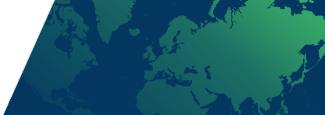

North Korea
Synthesis
MAIN ECONOMIC INDICATORS
| 2020 | 2021 | 2022 (e) | 2023 (f) | |
|---|---|---|---|---|
| GDP growth (%) | 0.0 | 0.0 | 0.0 | 0.0 |
| Inflation (yearly average, %) | 0.0 | 0.0 | 0.0 | 0.0 |
| Budget balance (% GDP) | 0.0 | 0.0 | 0.0 | 0.0 |
| Current account balance (% GDP) | 0.0 | 0.0 | 0.0 | 0.0 |
| Public debt (% GDP) | 0.0 | 0.0 | 0.0 | 0.0 |
(e): Estimate (f): Forecast *Approximate data based on available sources
STRENGTHS
- Although currently deadlocked, bilateral talks with the United States and South Korea increase the likelihood of economic integration
- Youthful population, low labour costs
- Borders with China and Russia
- Extensive mining resources (coal, iron and other minerals such as copper) that remain largely untapped
WEAKNESSES
- Economically and politically isolated
- Chronic food and electricity shortages
- Dependence on energy and food imports
- Military spending dwarfs investment in productive sectors
- Extreme poverty (half of the population)
- Severe lack of infrastructure
Risk assessment
The gradual reopening should lead to recovery and alleviate food shortage
COVID-19 related strict lockdowns and border closures, bad weather, and pre-existing UN sanctions over its nuclear weapon program plunged the country into recession and triggered a food crisis in 2020 and 2021. North Korea shut down its borders in January 2020. Additional strict measures followed, including a ban on domestic travel, restrictions on entry to Pyongyang, the capital, and a 30-day quarantine for those who showed COVID-19 symptoms. These measures weighed on the mining and manufacturing industry (28.1% of GDP in 2020) and services (33.8% of GDP). The Bank of Korea (BOK) estimated that GDP decreased by 4.5% in 2020, driven by record decreases in mining (-9.6%), agriculture (-7.6%) and services (-4.0%). External trade, which was already impacted by the UN Security Council’s sanctions passed in 2017, plunged by 67.9% in 2020 from a year earlier. With UN sanctions already affecting its main exports - textiles (27% of the total in 2017), coal (22%) and seafood (8%) - the country had shifted and significantly increased its exports of watches and wigs before the pandemic, but both collapsed in 2020: -86.3% and -92.7% respectively compared to a year earlier. Furthermore, the border closures deprived the tourism industry of income, which was already very low before the pandemic due to isolationism. However, it was supported by the increasing inflows of Chinese tourists in recent years, particularly in Pyongyang. These trends should have continued in 2021.
However, the economy is expected to recover gradually in 2022 on the back of trade as borders with China, the almost unique trade partner, reopened in September 2021. Trade surged and doubled between both economies in September 2021. Nevertheless, risks of coronavirus variant outbreaks in China may trigger renewed border closures in order to prevent spreading. Domestic demand, while still subject to frequent shortages of oil and consumer goods linked to the sanctions, should gradually recover along with imports. External trade is likely to pursue its slow recovery in 2022, easing the food shortage, as the declining agricultural sector (22.4% of GDP in 2020), largely state-owned and unproductive, recorded a poor crop performance due to heavy floods over the summer of 2021. Mining has also seen its share decline, but still accounts for 10% of GDP. The explanation for the shrinking shares of these two sectors lies with the rise in services (34% of GDP in 2020, five points up on 2012), although the sector’s strength is due to services linked to state activity, which represent 74% of the sector's added value. Tourism is unlikely to recover in 2022 as borders should be only open to cross border trade. The won, which is mainly traded on the black market (Jangmadang), appreciated by over 25% against the dollar between January and October 2021. A slump in imports with China in 2021 due to border restrictions and the government crackdown on the use of the dollar could explain the currency appreciation. Authorities have been tracking the reserves of foreign currency held by North Koreans, requiring them to deposit all foreign currency at banks. This move appears to be in line with the authorities’ plan to strengthen its socialist systems, at a time when the country was further isolated.
Towards a reconciliation between North and South?
North Korea's Supreme Leader Kim Jong-Un succeeded his father in 2012. He controls the three main administrative organs of the country: the Workers' Party of Korea (WPK), the Korean People's Army (KPA) and the State Commission. The people of North Korea are under total control of the state and its unique party.
North Korea has been under UN sanctions over its nuclear and ballistic missile programs since 2017. Although the former U.S. president Trump met three times with the North Korean leader in 2018 and 2019, no progress has been made on U.S. calls for North Korea to give up its nuclear weapons and Pyongyang’s demands to withdraw UN sanctions. The country continued to develop its nuclear missile programs through 2021. This prompted the U.S. and the UK to raise the issue in the UN Security Council, despite calls from China and Russia, both also part of the Council, to lift the sanctions in light of the current food shortage. That being said, despite a stronger stance towards Pyongyang, Biden’s administration is willing to offer some relief in sanctions in exchange for efforts towards denuclearization.
Relations between North and South Korea seem to improve as they restored their cross-border hotlines in October 2021, a year after North Korea blew up the joint-liaison office in Kaesong. They are also currently in talks to hold a North-South summit to restore relations. A reconciliation could revive the manufacturing industry through South Korea’s FDI inflows and construction through joint infrastructure projects (rail and road) A closer tie could also improve living conditions in North Korea through further trade and help to reduce the food shortage. The Inter-Korean talks might also help to restart negotiations between Pyongyang and Washington.
Last updated: February 2022




